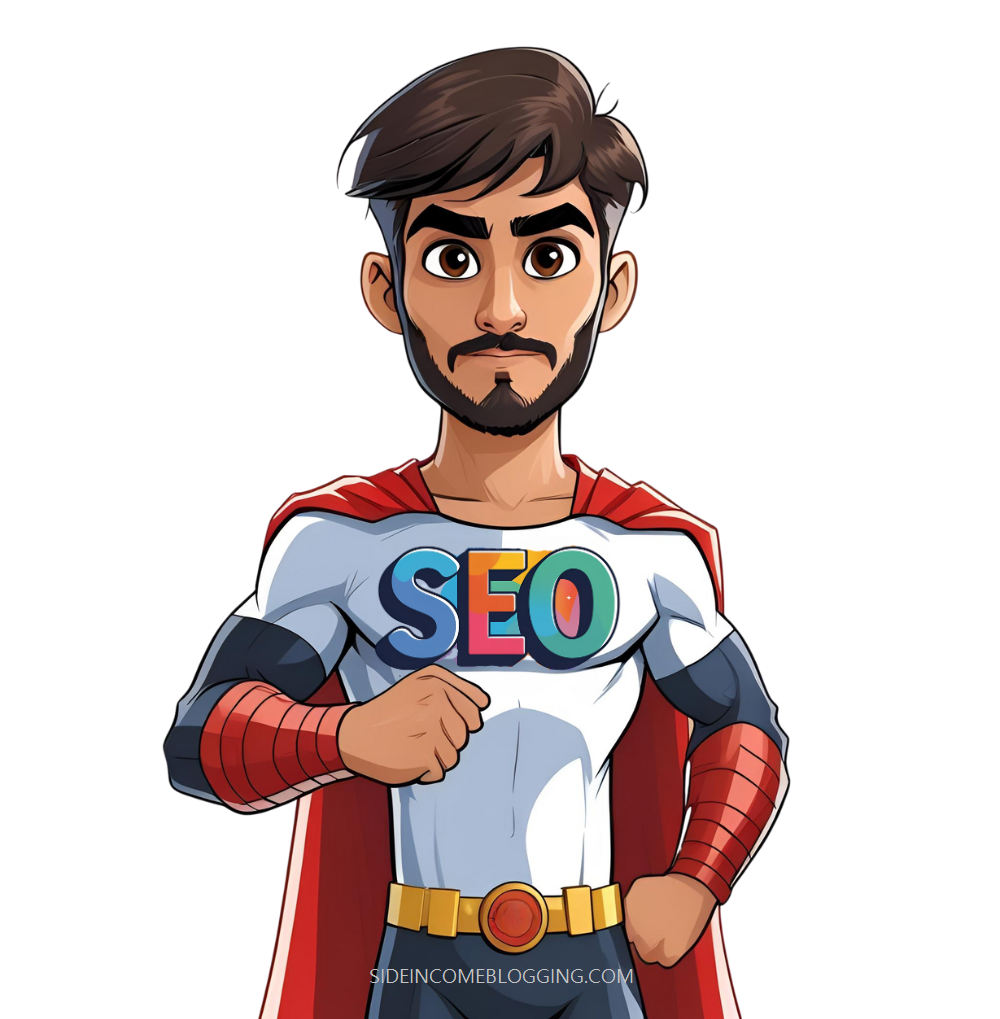“This post contains affiliate links. I may earn a commission if you make a purchase, at no extra cost to you.”
Introduction
Search Engine Optimisation (SEO) considerations are important when starting a side income blog and blogging SEO considerations can be broken down into off page, on page and technical SEO, but it’s also important to look at the big picture to be successful blogging, including creating high quality content. A measure of success in blogging can be measured by traffic, including organic traffic.
Off page SEO includes strategies that occur outside of your blog. An example is backlinks from other sites, with the number of backlinks your blog has and their quality, being a ranking factor for appearing on search engines.
On page SEO focuses on strategies within your web pages, such as trying to identify topics and keywords that have potential to be searched for and delving into creating solutions for those topics through posts.
Technical SEO for your blog includes altering the infrastructure and backend of your blog, to be more search engine friendly. An example of this is working on how to make your blog load faster.
Organic traffic is important and as organic search account for roughly 53% of traffic, it is statistically the dominant source of web traffic, making SEO considerations all the more relevant.
It’s important to remember that search engines, such as Google, have huge resources at their disposal, so they are ahead of the game at finding good quality content. This means focusing on creating high quality content for your blog, rather than chasing SEO all the time, is naturally a good idea.
Some other things to consider when starting a blog is choosing a niche or subniche that you are passionate about and have expertise for, as well as registering or acquiring a good domain name.
Off page SEO
Google rewards backlinks from high quality websites. For an ethical method to gain backlinks from other sites, try to give those sites a reason to link to your content.
Repurposing blog content for social media platforms and engaging on those platforms by sharing and commenting will help you to reach more of your audience and has an SEO advantage.
On page SEO
Focusing on long tail keywords involves making topics or articles on your blog around search phrases that are less common, usually with 3 or more words, rather than short search keywords. Short keyword combinations are usually harder to rank on search engines, as they have more competition.
When writing content, structure posts with easy to read paragraphs and use only one h1 heading per post, which will be your post title.
Your post title will form your URL slug. Creating a short and descriptive title that reflects what your content is about will provide a URL slug that helps your users to have a better user experience (UX) and also help search engines understand your content.
Internal links are links from posts and pages from your site to other posts and pages within that same site and are similar to backlinks in that search engines crawl those links to understand websites.
Use meta titles and meta descriptions. Using a plugin like Yoast, you can create meta titles and descriptions, which will help attract users to your posts that are listed on search engines, by providing context for them.
Optimize for featured snippets where you can. This is done using structured data markup, which can be a complex topic, but helps search engines further understand your content. See here for more information on structured data markup.
On page image SEO includes making descriptive file names and alt text that help users and search engines understand images.
Technical SEO
Site speed is an SEO factor that also contributes to UX. You can check how fast your sites loads, using Google PageSpeed Insights.
When starting a blog, it’s a good idea to submit sitemaps regularly to Google after making new articles until your site gains authority and is automatically crawled more often.
Technical image SEO includes using proper file formats and image file sizes and compression.
Another factor that contributes to technical SEO is making sure your site is mobile responsive. High quality WordPress themes will usually do this automatically and theme page builders for WordPress, such as Beaver Builder, include responsiveness out of the box.
Using HTTPS provides trust for your visitors as the data transferred from them to your website will be secure.
Common SEO Terms for Blogging
Search Intent – What someone who is searching on a search engine actually wants to understand. Understanding the query means you can provide a solution through posting, for such queries when they are common.
Keyword Ranking – Your blogs position on search engines for specific a single keyword or search query when searched for.
Keyword Research – Understanding what combination of words or what phrases are being searched for, so you can target what is commonly being searched by your audience and potentially provide a solution for them.
Domain Authority – A ranking metric from 0 – 100 developed by a software company Moz as an indicator to predict how well a website will rank on search engines results pages (SERP’s).
Click-through Rates – The percentage of people that click on the link to your blog pages from listings for you on search engines.
Conclusion
Off page SEO, on page SEO and technical SEO all work together to improve how your website performs on search engines, but it’s also important to work on naturally creating high quality content for your blog.

